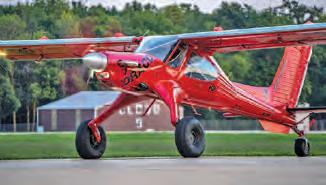
3 minute read
EAAProtectingUltralightActivityinCalifornia
Senior Care Authority, Peninsula will provide you the guidance concerning your loved one, including finding the best places to live, receiving the proper care, and navigating through a complex health care system.
• Free consultations • Available 7 days a week • Serving South San Francisco to Palo Alto
Advertisement
Senior Living and Care Solutions
For more information contact Annamarie Buonocore at 650/504-8549 abuonocore@seniorcareauthority.com
s


Factory Built Demonstrator with Airframe Safety Mods with Airframe Safety Mods EAA PROTECTING ULTRALIGHT ACTIVITYIN CALIFORNIA


EAA last month contacted officials in Yuba County, California, after EAA members there reported that the Yuba County Airport had prohibited ultralight operations at that facility. County officials had cited Federal Aviation Regulations and the FAA Airport Compliance Manual as the basis for its decision; however, EAA communicated that the county’s ordinance is inconsistent with actual FAA policies.
In a letter to Yuba County Airport management on Feb. 17, EAA notes that FAA airport policy does allow airports to restrict certain types of aeronautical activity in the interests of safety, however, the policy requires any restriction based on safety to be adequately justified and supported. The FAA has the final say on whether or not a restriction is necessary. Airport sponsors, owners, or management may not act unilaterally.
EAA contends that “ultralight operations are consistent with safe operations at most general aviation airports of Yuba City’s size.” There are numerous examples of such safe operations at airports throughout the country.
In addition, Yuba County references FAA Part 103.19 as justification for the restriction. However, EAA counters that EAA AirVenture features the Fun Fly Zone, which is home to ultralights, light planes, powered parachutes and trikes, hot-air balloons, homebuilt rotorcraft, and light-sport aircraft (LSA). The area is best known for its grass runway, where you can get up close to the many daily aircraft operations, including morning and evening ultralight flying, homebuilt rotorcraft flights, as well as Twilight Flight Fest several evenings per week. AirVenture is slated for July 25-31. (Courtesy EAA AirVenture)

section centers on military agencies establishing restricted and prohibited areas, not for airport operations.
EAA will continue to monitor this issue to ensure that airport access and the freedom of flight is maintained for aviators and aircraft allowed to operate at those facilities. Learn more at eaa.org.
Eliminate Lead Emissions
Continued from Page 13
marketplace availability, and continue to provide the countless benefits of general and recreational aviation to our nation and the world.”
James Viola, HAI President and CEO - “The EAGLE initiative brings together stakeholders dedicated to advancing a sustainable future for general aviation. It is imperative that we safely transition pistonengine aircraft to lead-free aviation fuel by the end of 2030. This initiative is the right thing to do for the environment and the economic health of our industry. Helicopter Association International (HAI) is committed to this partnership and applauds the broad public-private partnership that has come together enabling industry and government to accelerate a solution. The vertical flight industry is eager to work with all stakeholders to move the EAGLE initiative forward.”
National Air Transportation Associa tion President and CEO Timothy Obitts - “NATA and its members are dedicated to finding a single drop-in unleaded fuel to replace 100LL that is compatible with existing infrastructure. We thank the FAA for its guidance and support, and look forward to working with our industry partners toward a safe and viable solution. The EAGLE initiative is another great example of how we are uniting for the safety, success, and future of the industry.”
NBAA President and CEO Ed Bolen - “We are proud to be a part of this pioneering initiative to chart a course for a future free of leaded fuels. The EAGLE initiative is a very important step in ensuring the sustainability, safety and security of aviation in the years to come.”
This announcement is part of the FAA’s ongoing effort to build a sustainable aviation system. In November, the U.S. released its first-ever comprehensive Aviation Climate Action Plan to achieve net-zero emissions by 2050. Earlier in 2021, the FAA announced more than $100 million in matching grants to increase aircraft efficiency, reduce noise and aircraft emissions, and develop and implement new software to reduce taxi delays.
Find more information about the FAA and its sustainability efforts at its sustainability page, www.faa.gov/sustainability.



